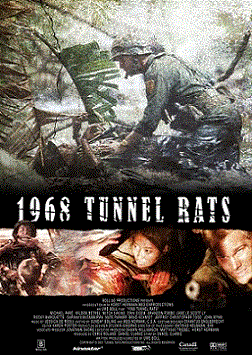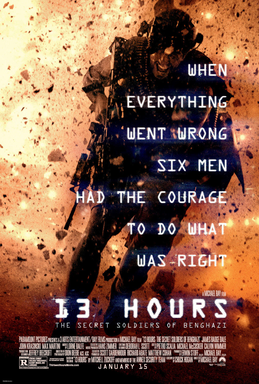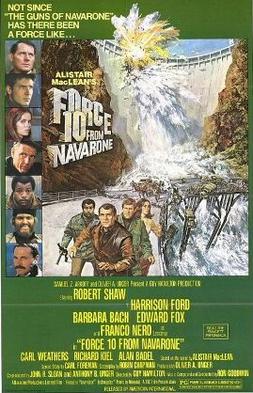
“Hacksaw Ridge” is the new war
film by Mel Gibson. It is Gibson’s first
movie in a decade. The last having been “Apocalypto”. Gibson’s earlier war movies were “Braveheart”
and “We Were Soldiers”. This one differs
since it concentrates on a pacifist instead of a warrior. But it has a similar religious vibe to “We
Were Soldiers”. The movie was fourteen
years in development before Gibson brought it to fruition. He spent a relatively sparse $45 million on
it. The filming took place mainly in New
South Wales. Robert Schenkkan and Randall
Wallace wrote the original script, but thankfully Andrew Knight was brought in
to polish it. The movie premiered at the
73rd Venice Film Festival and received a ten minute standing
ovation. The movie is the true story of
the first practicing conscientious objector in Congressional Medal of Honor
history – Desmond Doss. (Alvin York was
a conscientious objector, but he decided to participate in battle as a regular
infantryman.) Doss earned his decoration
on Okinawa in WWII.
The movie opens with a violent
combat scene replete with slo-mo, flames, flying bodies, etc. A prayer is recited over the chaos. This brief taste leads to a flashing back to
sixteen years earlier in the hills of Virginia where Desmond Doss (Andrew
Garfield) is dealing with a father who is a bitter WWI veteran who hits the
bottle and occasionally his wife. His
mother is a religious woman who instills a love of the Bible in her son. The family has a framed copy of the Ten Commandment and the Lord’s
Prayer. Cain killing Abel is a prominent
illustration. Desmond grows up strictly
believing the Sixth Commandment and also caring about his fellow human
beings. His saving a man who severs an
artery in an accident foreshadows his future medical interests. He meets a nurse named Dorothy (Teresa
Palmer) in a kill two birds with one stone scene. Their 1940s romance goes as
you would expect. When Desmond
volunteers for the Army, she sends him off with a Bible. He goes because he wants to serve his
country, but not kill for it. He ends up
at Fort Jackson for boot camp and when he meets the other guys, they seem nice
- until they find out on the rifle range that he refuses to even touch a
rifle. At this point, his mates and
superiors try to convince him that the military life is not for him. Since we have seen the opening scene, we know
his stubbornness will be rewarded with an all expenses paid trip to the tropical
paradise of Okinawa.
When they arrive at Hacksaw Ridge,
they are welcomed by truck-loads of dead bodies and the thousand yard stares of
the unit they are replacing. Next thing
you know, they are standing at the base of a cliff looking at some cargo nets
that they must ascend to sweep the Japanese defenders off the ridge and thus
win the war for the Allies. Stop eating
your popcorn because this shit is about to get real. And really noisy. And Doss is about to get really busy.
“Hacksaw Ridge” is a
surprisingly competent return for Mel Gibson.
I was definitely skeptical when I first heard about the movie. I was intrigued with the subject matter,
having mentioned Desmond Doss in my American History classes. When my wife and I went to the WWII Museum
this past summer, we spent time at the tribute to Doss as a Medal of Honor
recipient. A longer version of the
interview shown before the movie’s credits is on display. That interview makes clear the man’s deep
religious convictions which naturally led me to fear what the religious Gibson
might do with that theme. (I found “We Were Soldiers” to have laid on Col.
Moore’s faith a little thick.)
Thankfully, “Hacksaw Ridge”, while it has numerous religious references,
did not cause me to cringe. For
instance, many soldiers carried Bibles in WWII and Doss does not do any
preaching. There is a Christ on the
crucifix image towards the end but it is subtle, especially for Gibson. In other words, the film is not trying to
convert anyone and appears to be a sincere attempt to bring the remarkable
story of Doss to the masses.
The movie is well-made, but not memorable.
Not worthy of a ten minute standing
ovation. The cast is fine with only a miscast Vince Vaughn causing
head-scratching. Interestingly, Vaughn
is the only American actor in a movie where all the principal characters are
American. He plays the stereotypical
gruff sergeant, but his boot camp schtick is that of Don Rickles more than R.
Lee Ermey. It is hard not to view it as
stunt casting. I am not big fan of
Andrew Garfield, but he is satisfactory as Doss. The role does not require a lot of heavy
lifting as Doss is really one-dimensional.
Unlike his closest equivalent in cinema, Alvin York, he does not undergo
a conversion experience and he doggedly maintains his original pacifist
beliefs. Garfield appears to have watched
“Forrest Gump” a few times to prepare for the role. There is some chemistry with Palmer as
Dorothy, but the romance is straight out of a WWII movie made in WWII. At least we get to know her a bit. I can’t say the same for Doss’ comrades. If Vaughn’s Sgt. Howell did not give a few
nicknames in the obligatory barracks scene, they would have no personalities
whatsoever. The screenwriters only
fleshed out Pvt. Smith (Luke Bracey) to be the embodiment of the units’
condescension toward the “cowardly” Doss and the respect Doss would earn on
Okinawa. Sam Worthington as Capt. Howell
is solid in what is essentially the same cliché that Vaughn is playing.
This could be a very polarizing
movie. The audience when I saw it was
mostly senior citizens. I can see where
they enjoyed the biographical part of the feature, but then the movie shifts into
combat porn midway through I doubt they expected to see a lot of entrails or
rats eating corpses. (But there is little cursing in the film!) The commercials claim that “Hacksaw Ridge” is
the best war movie since “Saving Private Ryan”.
Sorry, no. SPR revolutionized war
movies by coming the closest to recreating what the soldiers experienced. Since then some movies have been in the same
league – Black Hawk Down, Flags of Our Fathers, Letters from Iwo Jima. We Were
Soldiers, and Lone Survivor. Others have
taken the what I call “exteme realism” route.
The theory behind these movies is that because war is hell, the more
hellish you depict it, the more realistic it will be. Movies of this ilk include Pearl Harbor,
Flyboys, Behind Enemy Lines, 13 Hours, and Fury. And countless straight to DVD titles. Since SPR, these types of combat porn movies
have tried to top SPR by throwing a kitchen’s sink worth of weapons, explosions,
flames, entrails, and gallons of blood.
More is not better. Let me give
you one example. In SPR, a flamethrower
is used to finish off a
pillbox. In HR, flamethrowers are used
to roast charging Japanese. The first
example is an accurate depiction of use of that weapon, the second is not. Here is another example. In SPR, Capt. Miller drags an upper torso
along the beach. In HR, Smitty uses an
upper torso as a shield as he wastes several Japanese in a Ramboesque spree.
In conclusion, I recommend “Hacksaw
Ridge” as a biopic, not as a war movie.
The movie is commendably accurate in bringing the story of one of
America’s great heroes to the screen.
Desmond Doss deserved this movie and if jazzing it up with ridiculous
combat was required to green light it after fourteen years, then so be it. The combat is gonzo and reminded me of the
Korean style as in movies like “Taegukgi”.
The difference is “Taegukgi” is clearly fictional and the combat is
supposed to be entertainingly over the top.
I fear that American audiences who are not familiar with that style will
mistake it for reality. For instance,
there are more bayonet stabbings in this movie than in the entire war in the
Pacific. If you want to know what it was
like on Okinawa, watch the Okinawa episode of “The Pacific” miniseries. If you want to learn about Desmond Doss,
watch “Hacksaw Ridge”.
GRADE = B
HISTORICAL
ACCURACY: Desmond Doss did not volunteer for
the war. He was drafted. However, he could have claimed a deferment due
to his shipyard job. He did claim
conscientious objector status and was allowed to become a medic. The movie is partly accurate in showing the
animosity his beliefs fueled within his unit.
But the men were not as upset about his refusal to carry a weapon as
they were with his refusal as a Seventh Day Adventist to work on
Saturdays. The men considered this to be
shirking. They let their feelings be
known when they would pelt the praying Doss with shoes and epithets. They called him “Holy Jesus” and Holy Joe”. There were no beatings and the Smitty
character is fictional. (One soldier did
threaten to kill him the first time they entered combat.) His superiors (Hammel and Glover) did
encourage him to quit and the movie does a fair job with the Section 8 and the
court-martial. The Army backed down, not
because of intervention by Doss’ father, but because it realized that
prosecuting him was a political mistake.
Doss did marry a nurse named
Dorothy, but they met in a church and he was not prevented from making their
wedding. She did give him a Bible when
he left for war. His parents are well
depicted. His mother was the key to his
religiousity. His father was an
embittered veteran with alcohol problems.
However, the incident involving the gun was between his father and an
uncle, not his mother.
The movie gives the impression
that Doss’ unit first saw combat in Okinawa.
(And does not bother to explain what they were doing from 1942 to 1945.) In actuality, the 77th Division
fought on Guam and then Leyte in the Philippine campaign. They were battle hardened. And by Okinawa Doss had earned their respect.
He earned a Bronze Star on Leyte. The
movie implies the men were still skeptical about him when they climbed the
ridge. They did go up on cargo nets. The assault was successful at first with several
pill boxes taken out with few casualties.
(One of the few tactical accuracies in the film has the men providing
covering fire for Smitty as he sneaks up and throws in a satchel charge.) A night attack by the Japanese swept Doss’
unit off the escarpment. (The Japanese
rarely launched banzai attacks in the daytime.)
He did stay and lowered wounded by way of a special sling he had learned
in Virginia. He later admitted to saving
50 men while the movie used the Medal of Honor citation number of 75. He did pray to “help me get one more”.
The second assault was delayed as the men
waited for Doss to pray and that assault did take place on his Sabbath. The movie depicts this assault as though it
was a routing of the Japanese. (The
scene reminded me of Gibson’s ridiculous feel-good ending in “We Were Soldiers”.) In reality, evicting the Japanese from the
escarpment was not via a heroic charge, but was done through painstaking and
painful taking of enemy positions like caves. The movie does not clearly portray his other feats. On May 2, he rescued a soldier exposed in a
position two hundred yards forward. He
also treated four wounded men very close to a cave entrance and dragged each
back. On May 5, he aided an artillery
officer who was under fire. And carried
a wounded soldier one hundred yards soldier from where he had been pinned down. On May 21, Doss was wounded by a grenade
while in a fox hole at night. He took 17
pieces of shrapnel in his leg. When he
was being moved five hours later, he rolled off his stretcher to bandage a
wounded man. Later that day, he was
wounded by a sniper. They did target
medics. He made a splint out of a rifle
stock and crawled back 300 yards under fire.
He did lose his Bible in the process, but it was not returned by his
searching mates until he was on a hospital ship. Gibson decided that reenacting his actual
wounding and selfless actions afterwards would be considered fictionalized by
the audience. And yet, it was okay to
have Doss pulling Howell on a shelter half while Howell uses his grease gun to
hold off pursuing Japs! You can’t make
this stuff up. Oh, wait…
P.S. Dear Mel, during warfare soldiers occasionally have to reload. I saw no examples of that in your movie.
.png)




